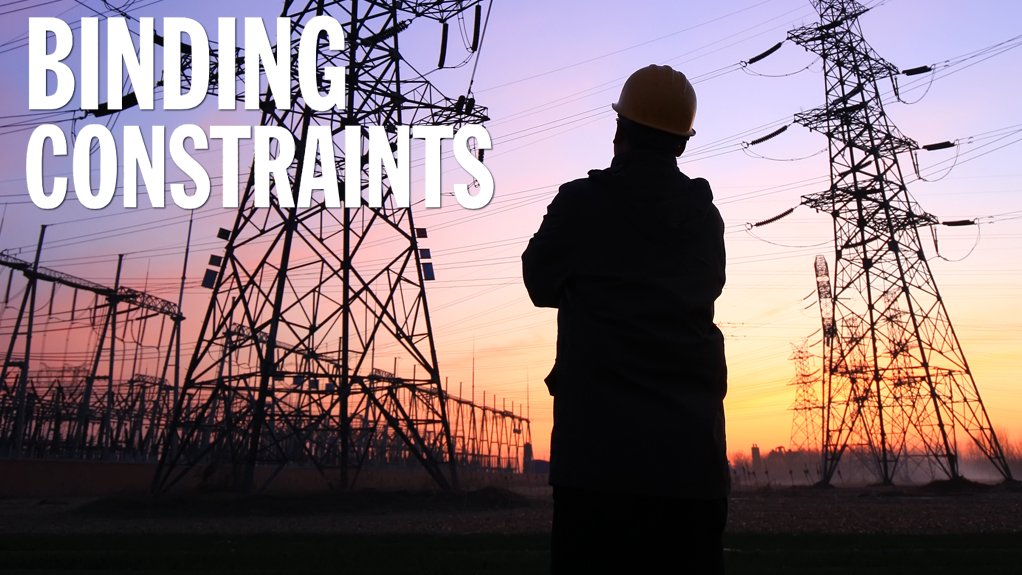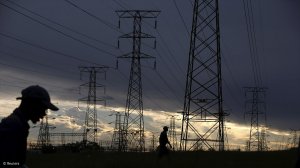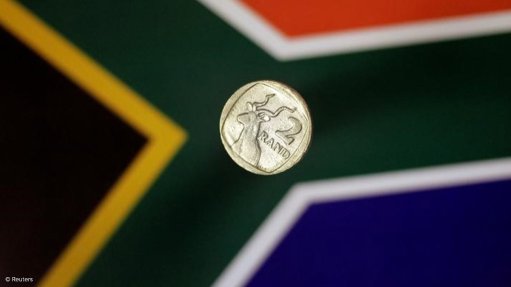Grid capacity, skills shortages hampering renewables roll-out




BOTTLENECKS To end loadshedding, we need to unlock more grid capacity and up the skills needed for a just energy transition
Photo by Reuters
SAPVIA CEO Dr Rethabile Melamu
Grid capacity constraints and skills shortages have been highlighted by several renewable industry leaders as the primary issues that are holding South Africa back from overcoming the current energy crisis.
In a webinar hosted by Creamer Media last month, pundits from various industry bodies discussed the role that renewable energy might play in assisting South Africa in overcome loadshedding.
Generally, the view is that enough renewable-energy projects were either planned or under way to resolve South Africa’s energy crisis before 2030, but these investments are at risk of being undermined by uncertainty surrounding grid allocations and inadequate skills to support the booming renewables industry.
Grid Constraints
South African Photovoltaic Industry Association (SAPVIA) CEO Dr Rethabile Melamu noted the significant grid capacity challenges in the Northern Cape, the Western Cape, and some parts of the Eastern Cape – where the most abundant renewable-energy resources are located.
However, much less grid constraints existed in Limpopo and Mpumalanga.
“Africa possesses the best renewable-energy resources in the world. Even areas that are considered low resource areas, such as Mpumalanga, the Free State and Limpopo, have relatively high renewables resources, compared to other places globally,” Melamu said.
SAPVIA’s position is to support the development of projects in these areas.
“The optimal locations for renewable energy in our country are currently highly saturated. The grids, networks and capacity are overwhelmed. However, it is crucial to keep in mind that many parts of our country possess incredible renewable resources and have the capacity for further development when viewed on a global scale. We are fortunate in this regard,” Enpower Trading CEO James Beatty reiterated.
SAPVIA and the South African Wind Energy Association (SAWEA) are, consequently, working closely with industry partners – particularly State-owned utility Eskom – to provide guidance in terms of grid planning.
“To plan grid upgrades, Eskom needs to gauge the appetite for renewable-energy projects. Although there are grid capacity constraints in some areas, there is grid availability in Mpumalanga, along with an interest in developing projects in that region,” Melamu said, adding that it was crucial for the renewables industry to collaborate with relevant partners to ensure the support and development of projects in these less resource-rich areas.
However, SAPVIA has acknowledged the need for long-term development of grid capacity and infrastructure for renewable energy in the more resource-rich areas.
Melamu noted that addressing capacity challenges was essential, hence the introduction of interventions – such as curtailment and storage – was also necessary. As such, she approved of the Independent Power Producer (IPP) office initiating storage bid windows to address these short-term capacity constraints.
"We see a rapid acceleration in the appetite for renewable-energy uptake, in not only traditionally resource-rich areas but also other regions. This includes wind, photovoltaic (PV) and hybrid solutions, including battery storage. The main driving factor behind this trend is the availability of open grid capacity in these areas,” SAWEA senior technical adviser Santosh Sookgrim added.
Eskom recently announced that it was preparing to issue updated grid queuing rules in its Interim Grid Capacity Allocation Rules document that will outline how it plans to manage the scarce grid connection capacity. This could help ensure more equitable distribution of capacity, eliminate “hogging” and give preference to projects that are ready to begin construction.
This new approach will result in Eskom’s moving away from its original ‘first come, first served’ framework towards one that is based on ‘first ready, first served’, Engineering News & Mining Weekly reports elsewhere in this edition. However, there is also criticism that the rules may be overly burdensome.
Owing to claims of grid oversubscription in the Western, Eastern and Northern Cape provinces, none of the 23 onshore wind projects that submitted bids for a 3 200 MW allocation during the sixth bid window of the public renewables procurement programme were chosen as preferred bids. This brought to light the lack of an adequate queuing system.
Beatty also noted that another constraint hindering the roll-out of renewables was the challenging process of submitting bill of quantities applications.
“Numerous projects are stalled and not progressing as expected. We understand that Eskom is making renewed efforts to compel the reapplication of many of these bills of quantities. The primary concern is that IPPs with approved bill of quantities applications have not yet commenced construction,” he said.
Beatty noted that, consequently, this situation was obstructing the progress of important initiatives, such as the latest Renewable Energy IPP Procurement Programme round, specifically in terms of wind projects.
“As a result, there is a significant amount of unused capacity,” he said. However, he noted that this inefficiency within the system was, thankfully, being addressed.
Skills Constraints
However, Sookgrim noted that, in addition to immediate grid constraints in key renewables-rich regions of the country, the required skills to accelerate the growth of the industry, for wind and PV, were lacking.
“We need to attract new talent to the sector and ensure that individuals from traditional power generation industries are upskilled to meet the demands of renewable energy.”
He described “a lack of a clear pathway into the industry” as one of the major obstacles to achieve this.
“Unlike many other sectors, there is a deficiency in terms of providing a comprehensive outline of required studies, training locations, and expected outcomes, such as certifications and accreditations. We are committed to addressing this gap and providing clarity in the renewable-energy sector.”
It is critical to acknowledge the need to attract not only engineers but also professionals in tangential areas of expertise such as human resources, marketing, accounting, law and policy.
“It is not solely about technicians and engineers, although they play a crucial role,” he added.
By clarifying these opportunities, Sookgrim said the aim was to make the renewable-energy industry more attractive and desirable for individuals currently studying or working in other industries.
“We have already witnessed a recent increase in the transition to the renewable-energy sector, particularly with the recent market boom. Additionally, we are exploring ways to foster grassroots engagement and participation in renewable-energy initiatives.”
Further, it is difficult to address the skills shortage because it is challenging to get industry participants to come together and determine South Africa's renewable-energy industry skills requirements, according to Water Sector Education and Training Authority (EWSETA) CEO Mpho Mookapele.
“Currently, we approach this matter legislatively by collecting work skills plans from various companies each year. Unfortunately, the information we gather is often skewed, leading to an inaccurate understanding of the country's needs. This information is then presented to government for funding allocation, but it does not effectively ensure that we have the right quality skills at the right time.”
One of the major challenges the South African energy industry faces is its collective ability to accurately determine the necessary skills and the timing thereof.
“There are government policies and decisions that influence this process, adding to the complexity. However, this inaccurate demand determination is my primary concern,” she added.
Mookapele said that the training authority’s partnerships with SAWEA and SAPVIA had been valuable in terms of helping to clarify sector-specific demands through direct engagement with industry players. Instead of EWSETA’s approaching individual companies to determine demand, these collaborations have provided a more efficient approach.
As an example of such collaborations, the EWSETA has proposed a just energy transition collaboration platform, which aims to work with other entities and funders in the country to gain a clearer picture of the required skills.
“We also strive to collaborate with employers in the sector to upskill their employees and ensure access for those individuals outside the renewable-energy space, particularly the unemployed. It is a significant burden that our country has many qualified young people who are unemployed, while the renewable-energy sector is flourishing. We aim to work with employers to include these young individuals and enable them to meaningfully participate in these growing economies.”
The South Africa Energy Skills Roadmap 2023, published by the South African National Energy Agency in January, is helpful as a guiding document for navigating skills acquisition in the renewable-energy sector and steering it in the right direction, she concluded.
Article Enquiry
Email Article
Save Article
Feedback
To advertise email advertising@creamermedia.co.za or click here
Comments
Press Office
Announcements
What's On
Subscribe to improve your user experience...
Option 1 (equivalent of R125 a month):
Receive a weekly copy of Creamer Media's Engineering News & Mining Weekly magazine
(print copy for those in South Africa and e-magazine for those outside of South Africa)
Receive daily email newsletters
Access to full search results
Access archive of magazine back copies
Access to Projects in Progress
Access to ONE Research Report of your choice in PDF format
Option 2 (equivalent of R375 a month):
All benefits from Option 1
PLUS
Access to Creamer Media's Research Channel Africa for ALL Research Reports, in PDF format, on various industrial and mining sectors
including Electricity; Water; Energy Transition; Hydrogen; Roads, Rail and Ports; Coal; Gold; Platinum; Battery Metals; etc.
Already a subscriber?
Forgotten your password?
Receive weekly copy of Creamer Media's Engineering News & Mining Weekly magazine (print copy for those in South Africa and e-magazine for those outside of South Africa)
➕
Recieve daily email newsletters
➕
Access to full search results
➕
Access archive of magazine back copies
➕
Access to Projects in Progress
➕
Access to ONE Research Report of your choice in PDF format
RESEARCH CHANNEL AFRICA
R4500 (equivalent of R375 a month)
SUBSCRIBEAll benefits from Option 1
➕
Access to Creamer Media's Research Channel Africa for ALL Research Reports on various industrial and mining sectors, in PDF format, including on:
Electricity
➕
Water
➕
Energy Transition
➕
Hydrogen
➕
Roads, Rail and Ports
➕
Coal
➕
Gold
➕
Platinum
➕
Battery Metals
➕
etc.
Receive all benefits from Option 1 or Option 2 delivered to numerous people at your company
➕
Multiple User names and Passwords for simultaneous log-ins
➕
Intranet integration access to all in your organisation




















